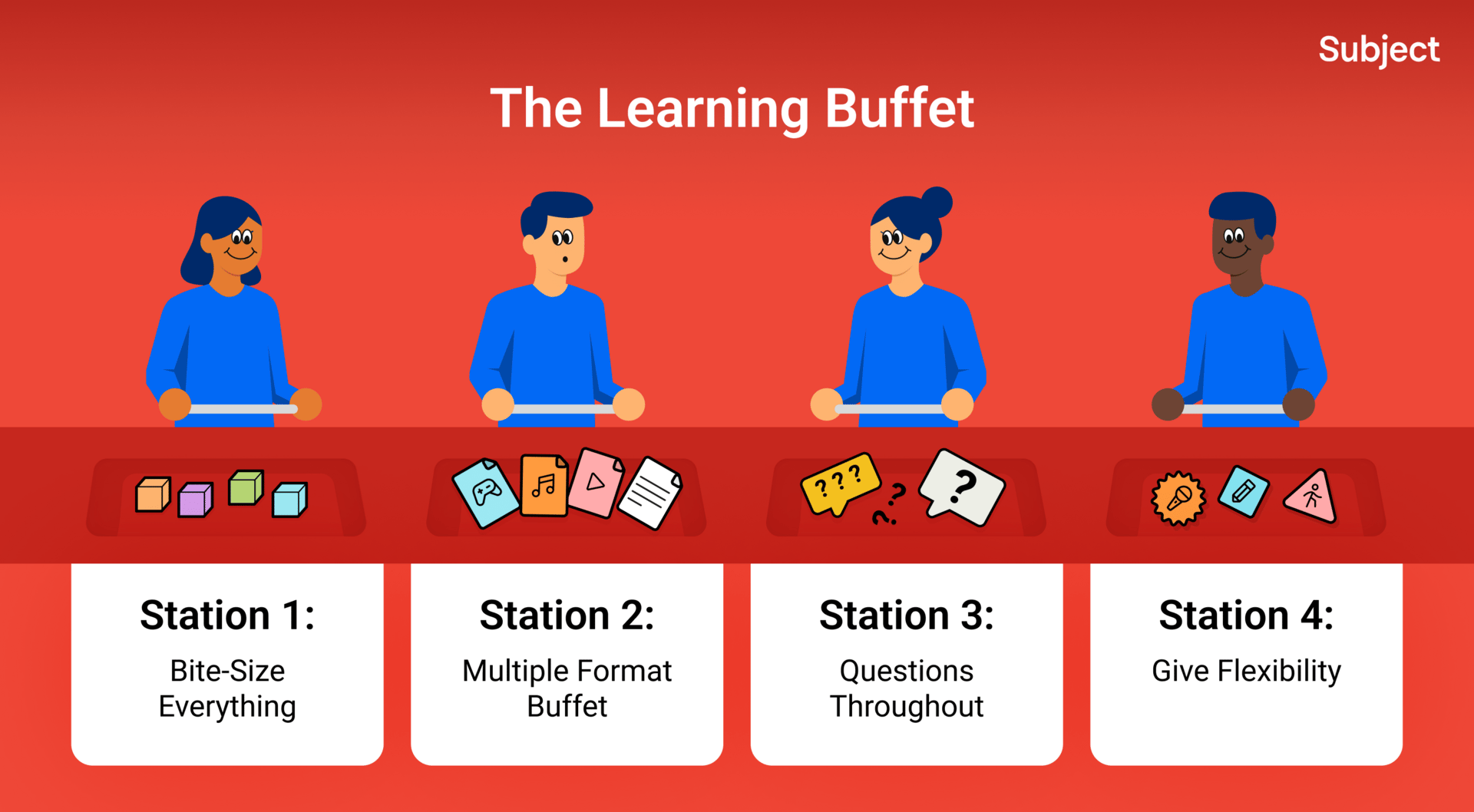
Remember those choose-your-own-adventure books where you could flip to page 47 if you wanted to fight the dragon or page 12 to hide behind a rock?
Turns out that was actually brilliant pedagogy disguised as childhood entertainment.
Meet Amber Shivers, our Instructional Manager at Subject and former special education teacher, who spent two decades watching schools serve up textbook chapters like they're training kids for competitive eating contests.
Her "chunking" method breaks content into bite-sized pieces with comprehension checks between each morsel. Turns out when you stop serving textbook chapters like competitive eating contests, kids actually digest the material.
Want to know how she did it? Keep reading 👇

Here’s what’s on the dashboard this week:
Today’s Deep Dive: How to chunk content like a learning buffet
Reading Rainbow: Emergency plans and AI panic in schools
From Our Desk: Dropping beats (and knowledge)
Watch of the Week: Time to settle the debate: Dean v. Jess v. Logan
Show of Hands:Tell us your go-to emergency lesson plan


How to chunk content like a learning buffet
Amber Shivers watched schools treat struggling readers like toasters—either they work perfectly or they're burnt (out).
As a former special education teacher, she got tired of seeing kids labeled as "problems" when the real issue was serving up Infinite Jest-sized chunks to brains that needed appetizer portions.
She found her solution through content "chunking.” It’s basically like cutting your kid's food so they don't choke on it, but for education.
The results speak louder than that one student who never uses their inside voice. In a study Amber conducted with 30 students, three kids tested completely out of special ed, all 30 students jumped reading levels, and several shot up three grade levels in a single year.
Not bad. for someone who just figured out that overwhelming kids doesn't help them learn.
So, here’s how you can integrate Amber’s chunking method into your classroom.
Amber’s Four Steps to Content Chunking:
Byte-Size Everything: Break content into 2-3 sentence bites, with comprehension checks after each morsel. No more cognitive food coma.
Multiple Format Buffet: Serve every chunk as text, audio, and visual. Let students pick their learning style like they're customizing a Chipotle bowl.
Questions Throughout: Embed checkpoints instead of dumping all questions at the end like more homework. Build understanding brick by brick.
Give Flexibility: Some kids are verbal processors, others need to write, some need to move around. Stop cramming everyone through the same tiny academic funnel.
This strategy that started for kids with learning differences ended up helping everyone. When you make content digestible, all brains work better. (Who could have predicted that making things easier to understand would help people understand them better?)

When Emergency Plans Leave Kids Behind
Most school emergency evacuation plans still tell students with disabilities to "shelter in place" and wait for rescue, essentially turning crisis drills into educational abandonment.AI Academic Integrity Gets the Spotlight Treatment
Education Week tackles how educators nationwide are approaching AI in cheating, teaching strategies, and literacy lessons. Because apparently "just turn off ChatGPT" isn't a viable curriculum strategy. (Students still find other ways to avoid work.)Girls in STEM Hit a Post-Pandemic Wall
Girls saw STEM achievement gaps grow alongside mental health challenges post-COVID, while boys stayed relatively stable. Tools like GoGuardian Beacon are helping schools catch warning signs early, showing 26% lower youth suicide rates in participating districts.How Medical Training Broke Up with Death-by-PowerPoint
Medical schools discovered adults hate sitting still for hours when Boston Scientific flipped physician training from 51% lectures to 100% hands-on practice by moving foundational content online first. In other words, they stopped lecturing adults like they’re in detention. Result: zero complaints about needing more hands-on time and doctors who actually know how to use equipment instead of just knowing about it. Who would’ve thought that people learn better by doing things? Nobel Prize pending.

On the Subject Podcast #61
We look into how University High School Fresno’s music and arts programs became academic game-changers that improve everything from math scores to social-emotional learning. Pro tip: teaching kids to read music also helps them read words. Mind = blown.Parlier High School Senior Surprised with Scholarship - We had the privilege of surprising Claudia Rocha, a senior at Parlier High School, with a Subject scholarship. Claudia didn’t just meet expectations—she redefined them, earning 60 credits to graduate on time.
The Classroom Stage: Making Education as Engaging as Entertainment - Join Fernando Szew, President of Fox Studio, as he shares insights on how the principles of entertainment can revolutionize education.


Our pick of the week: Gilmore Girls
Why We’re Obsessed: It's the perfect autumn rewatch where a student actually finds joy in homework and the school newspaper. Rory changes her circumstances through education, while her fast-talking mom delivers enough literary references to make English teachers weep. (Finally, a teenager who gets excited about learning instead of complaining about it!)
Recommended lesson integration:
Socratic Seminars – Channel Lorelai's rapid-fire conversation style for student discussions, because maybe classroom debates don't have to move at the speed of molasses
Small Town Democracy – Use Stars Hollow town meetings to teach civic engagement and voting processes, turns out local government is way more entertaining when Kirk is involved
Literary Analysis via Rory – Create reading lists based on Rory's book obsession and actually discuss why these classics matter, bonus points if you can keep up with their references without Googling
Luke’s Diner Economics – Luke's Diner as a case study in small business management and community economics. Seriously, it’s a restaurant that stays in business despite the owner's personality and bad customer service.
Family Communication Styles – Compare mother-daughter relationships across cultures and generations, because healthy family communication exists and we should study it. (Call your moms!)

Last week’s question: Which classroom setup made you feel most at home?
Last week’s winning answer: Desks in perfect rows facing forward
Now on to this week’s question!
What was your go-to "emergency" lesson plan?
Thank you for joining us for another edition of On The Subject. We’ll see you again in a week, with more stories from the hallways.
The Subject Team
Want to learn more about our curriculum offerings? Contact us today.
Share On The Subject!
{{rp_personalized_text}}
{{rp_upcoming_milestones}}
Or copy and share this link: {{rp_refer_url}}
